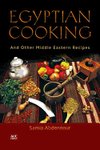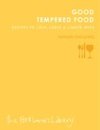
-
 Anglický jazyk
Anglický jazyk
Medieval cuisine
Autor: Source: Wikipedia
Source: Wikipedia. Pages: 31. Chapters: Frumenty, Regional cuisines of medieval Europe, Cubeb, Entremet, Almond milk, Hippocras, Bartolomeo Scappi, Byzantine cuisine, Manchet, Verjuice, Martino da Como, Trencher, Chireta, Lady Arundel's Manchet, Potage,... Viac o knihe
Na objednávku, dodanie 2-4 týždne
14.17 €
bežná cena: 16.10 €
O knihe
Source: Wikipedia. Pages: 31. Chapters: Frumenty, Regional cuisines of medieval Europe, Cubeb, Entremet, Almond milk, Hippocras, Bartolomeo Scappi, Byzantine cuisine, Manchet, Verjuice, Martino da Como, Trencher, Chireta, Lady Arundel's Manchet, Potage, Le Viandier, Savore Sanguino, Beer soup, Poultry, Spicery, Scalding-house, Saucery, Sop, Horsebread. Excerpt: Medieval cuisine includes the foods, eating habits, and cooking methods of various European cultures during the Middle Ages, a period roughly dating from the 5th to the 16th century. During this period, diets and cooking changed less across Europe than they did in the briefer early modern period that followed, when those changes helped lay the foundations for modern European cuisine. Cereals remained the most important staples during the early Middle Ages, as rice was a late introduction to Europe and the potato was only introduced in 1536 with a much later date for widespread usage. Barley, oat and rye among the poor, and wheat for the governing classes, were eaten as bread, porridge, gruel and pasta by all members of society. Fava beans and vegetables were important supplements to the cereal-based diet of the lower orders. (Phaseolus beans, today the "common bean," were of New World origin and were introduced after the Columbian Exchange in the 16th century.) Meat was more expensive and therefore more prestigious and in the form of game was common only on the tables of the nobility. The most prevalent butcher's meats were pork and chicken and other domestic fowl, while beef, which required greater investment in land, was less common. Cod and herring were mainstays among the northern populations, and dried, smoked or salted made their way far inland, but a wide variety of other saltwater and freshwater fish were also eaten. Slow transportation and inefficient food preservation techniques, based exclusively on techniques of drying, salting, smoking and pickling, made long-distance trade of many foods very expensive. Because of this, the food of the nobility was more prone to foreign influence than the cuisine of the poor, and dependent on exotic spices and expensive imports. As each level of society imitated the one above it, innovations from international trade and foreign wars from the 12th century onwards gradually disseminated through the upper middle class of m
- Vydavateľstvo: Books LLC, Reference Series
- Rok vydania: 2014
- Formát: Paperback
- Rozmer: 246 x 189 mm
- Jazyk: Anglický jazyk
- ISBN: 9781156130636









 Nemecký jazyk
Nemecký jazyk 


